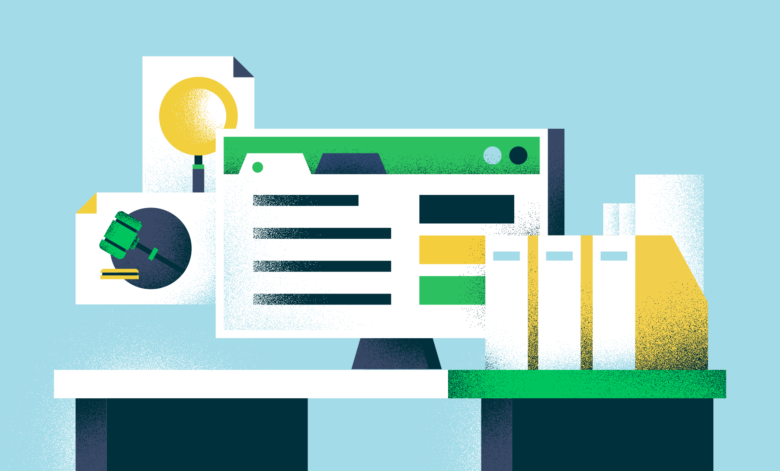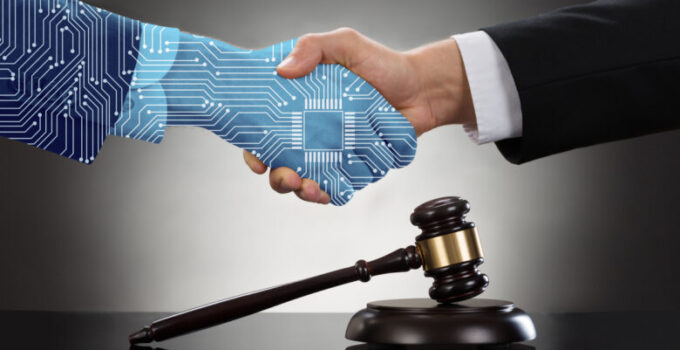Artificial intelligence is perhaps the handiest tool at the hands of some of the most talented processes across industries. When we talk about the legal profession, artificial intelligence is performing many automated tasks and disrupting the flow of regular proceedings. The legal world relies heavily on making judgments based on available evidence which is why automation works really well.
AI is overcoming challenges that were previously detrimental to the legal profession and took a lot of time. There are many uses AI is currently seeing which are largely in relation to helping the professionals. While complete replacement of the human factor is not likely to happen anytime soon the legal profession has been changed significantly with many benefits. Let us see just how it reshapes the legal industry.
Helping Not Replacing
The primary concern any professional has with artificial intelligence is that robots will take over their jobs. But that is not the case at all, especially with the law when a human touch is extremely important to mitigate better. AI is used mainly for conducting extensive legal research which would take the lawyers a number of days to do otherwise.
It is also used to quickly review contracts and see if there are any discrepancies in the terms and conditions mentioned. They are also primarily used in discovery when new documents are essential to finding. Lawyers are making full use of AI to predict the outcomes of a case based on current evidence.
They are also being used to draft contracts and provide recommendations and how to best approach a particular case regarding both bail granting and sentencing. Artificial intelligence can help recommend the outcome which can drive the lawyers towards the right strategies when it comes to swelling judicial decisions at jury trials.
It will also positively impact the productivity of the lawyers involved in a case. This is because they will be focusing on the testimony and human interaction rather than the research and technical parts. The decision-making process relies on how fast the entire research and discovery is done.
So AI can speed up the process of justice and have a positive impact on the speed of the session make. There are numerous limitations when it comes to completely trusting AI and how it mimics human judgment. The effectiveness will remain limited due to this drawback. If you want some consulting services, make sure to contact personalinjurylawyerslosangeles.com/.
Generation and Analysis of Data

Source: entrepreneur.com
Lawyers are trained for accurate generation of data which will help them in the case. They analyze the trends and all the data in order to find how the evidence can help the case. When we think of AI, the same procedures are fomented but in significantly less. Time. They have all the data available online in their arsenal.
When we talk of generative AI, one of the defining features is two different it is from humans. We know that everyone has a different perspective and strategy to approach the research. But AI has emergent behaviors which are very targeted. Any results drawn out in such a way can be highly helpful because of the unpredictability.
Emergent behavior stands for new algorithms that are specific to different AI models. The sequencing and tracking are inherently different so using one model will give different results as compared to using another one much like human differences. The idea with generative AI is to focus on the most important factors but they can vary depending on the approach and algorithm in use.
The emergent behavior has been helpful in different industries like journalism and creative writing. It shapes the legal profession by giving the professionals a chance to discover something that they would have missed otherwise.
The entire process has to be context-specific because law runs according to very specific principles that may even keep on changing as per new rules and regulations. When it comes to drafting legal contracts, there has to be a human upper hand that checks all of the progress. Emergent behavior is good in finding out documents but not so much while making legally binding contracts.
Predicting What Shall Happen
We have already established that artificial intelligence is only meant to help out in the entire decision-making process. One of these features is to predict legal outcomes based on available evidence and the laws. One can adjust the context of the case to find the most probable outcome. This can help the lawyer to decide when to settle and when to go ahead with the case.
Predictive analytics are used extensively in such a case along with machine learning. Predicting behaviors is a strong suit depending on the inside taken from lawyers and judges. Not only is artificial intelligence used in predicting the outcomes for law firms, but it is also directly used by the people in power.
AI is now being used to advise judges on sentencing and bail. It can lead to severe complications if the decision is taken at face value and not analyzed with the expertise and experience of a judge. The outcomes can help with better arguments for lawyers but the accuracy can be a drawback.
This drawback is especially concerning when a judge is taking advice because everything needs to be analyzed very carefully. Some bias was against black prisoners and minorities based on how AI developed a racial perspective. The justice system is already fighting against biases to give fair decisions. AI can negatively impact the way justice is served in the country.
The Takeaway

Source: kirasystems.com
AI technology is rechecking the legal profession in both good and bad ways. Saving time during the preliminary processes helps in getting closer dates for trial. It is basically used for reviewing contracts and other documents and data along with analysis. There are certain drawbacks to the technology as well. These drawbacks are the reason why it still requires human management to oversee all the little details.




